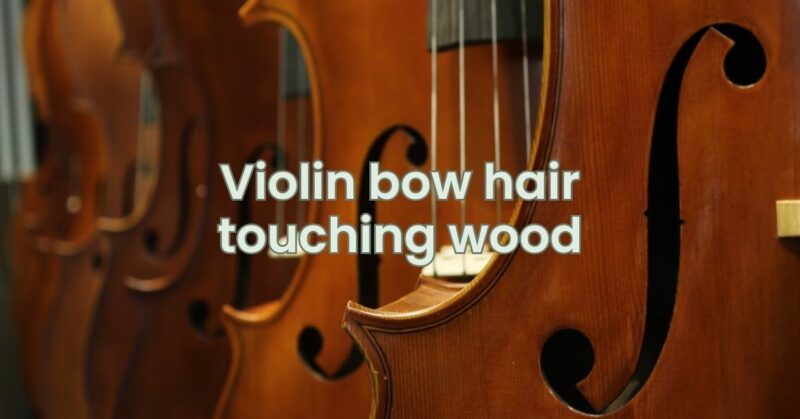The violin bow is a tool of artistic expression, capable of producing a wide range of tones and textures. However, occasionally, violinists may encounter a situation where the bow hair comes into contact with the wood of the bow itself. In this article, we’ll explore the reasons behind violin bow hair touching the wood, its potential impact on performance, and how to address and prevent this issue.
Understanding the Occurrence
The phenomenon of violin bow hair touching the wood is often referred to as “buzzing” or “chattering.” It occurs when the hair of the bow comes into contact with the wooden stick, creating an unwanted noise that can interfere with the desired tone production. This buzzing can occur for various reasons:
- Excessive Pressure: Applying excessive pressure on the bow while playing can cause the bow hair to press down and touch the wood. This can happen when a violinist is trying to produce more volume or control the sound.
- Improper Technique: Using incorrect bowing techniques, such as angling the bow too steeply or unevenly, can lead to the hair touching the wood.
- Bow Warping: A warped or poorly adjusted bow can result in uneven hair tension and improper contact with the strings, increasing the likelihood of the hair touching the wood.
- String Pressure: If the strings are unevenly spaced or not properly aligned, they can push the bow hair towards the wood.
Effects on Performance
When bow hair touches the wood, it generates an audible buzzing sound that interferes with the intended tone and quality of the music. This unwanted noise can disrupt a musician’s performance and distract the audience from the musicality of the piece. Additionally, the friction between the hair and the wood can cause wear and damage to both the hair and the bow stick over time.
Addressing and Preventing Bow Hair Touching the Wood
- Focus on Bowing Technique: Proper bowing technique is essential for avoiding bow hair touching the wood. Pay attention to the angle, pressure, and alignment of the bow while playing.
- Balanced Pressure: Use controlled and balanced pressure on the bow to avoid pressing the hair against the wood. Let the natural weight of the arm and fingers guide your bowing.
- Bow Adjustment: Regularly inspect your bow for any warping or issues. If you notice uneven hair tension or unusual behavior, consult a luthier to assess and adjust the bow’s condition.
- String Alignment: Make sure the strings are properly aligned and spaced on the bridge. Incorrect string alignment can lead to uneven bowing and hair touching the wood.
- Professional Guidance: If you’re experiencing persistent buzzing, seek guidance from a violin teacher or instructor who can help identify and correct any technique-related issues.
Conclusion
Violin bow hair touching the wood is a situation that can impact the quality of your performance and the condition of your instrument. By understanding the factors that contribute to this issue and implementing proper techniques and adjustments, you can prevent unwanted buzzing and ensure a smooth and harmonious playing experience. Remember that consistent practice and attention to bowing technique will contribute to better control over the bow, enabling you to draw out the beautiful tones and textures that make the violin a captivating instrument.

